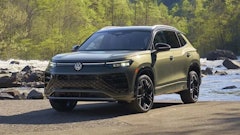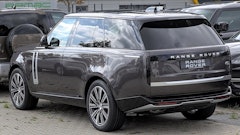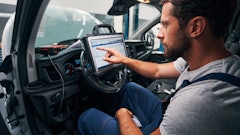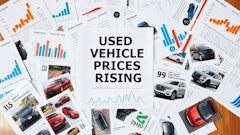
By Jeff Sanford
Toronto, Ontario — December 18th, 2017 — In this week’s Autonomous Report, the National Safety Council questions new GM apps, Lyft launches in Canada, the U.S. Government Accountability Office releases a major report questioning the loose regulations around AVs, and much, much more!
-An article in the tech press this week asks, “Do we really need to be able to shop while we drive, GM?” Good question. It’s one the U.S. National Safety Council (NSC) is asking about an upcoming in-car shopping app that GM is beginning to offer. As cars become much more digital there has been a rise in so-called connected cars (vehicles with an internet connection).
The latest concerns are with a new GM in-car app called Marketplace, which, “… allows drivers to shop and place orders from several major brands including Priceline.com, Starbucks, Dunkin Donuts and TGI Friday’s.” According to financial website, Bloomberg, the new option has drawn criticism from the president of the NSC over concerns it could contribute to distracted driving, which is “… already a factor in at least a quarter of all car crashes in the U.S.” The head of the NSC is quoted as saying, “There’s nothing about this that’s safe. If this is why they want Wi-Fi in cars, we’re going to see fatality numbers go up even higher than they are now.” The story goes on to say that, “GM’s counterargument is that the app is safer than trying to order the same items via a smartphone, and is designed to be simpler to use than a phone.
GM spokesman Vijay Iyer told Bloomberg that the app is designed to allow users to order items with just three or four steps, which is typically fewer than using a phone to do the same.” So there are arguments on both sides. But, “While the app may provide a safer way of booking a hotel room, there is still the option of using a hands-free in-car phone to just call the hotel, which is what people used to do in the early 2000s… if a driver feels the need to use an in-car app to place an order to Dunkin Donuts before he or she gets there, or reserve a table at TGI Friday’s, that driver is leading a life that is far too optimized,” according to the report.
Nevertheless, GM plans to launch the app in 2017 and 2018 model year vehicles that feature Wi-Fi hotspots. The story notes that other automakers and app developers are right behind GM in their ability to offer this new level of tech. Some are wondering if these will make cars more dangerous.
-The ride-sharing service, Lyft, began operating in Canada last week. The service is the company’s first international foray outside of the U.S. Lyft is the biggest challenger to the original ride-sharing service, Uber, and is expected to be one of the first companies to begin deploying AVs in urban environments.
Lyft spared no expense in the launch of its Toronto service. The company had popular Toronto Blue Jays pitcher Marcus Stroman take the first Lyft ride in Canada. He was in the car as it delivered an outpatient to Sick Kids Hospital. Lyft is making a point of marketing itself as a “friendlier” version of Uber, which has developed a dodgy reputation for bullying regulators and engaging in unseemly corporate practices. (Most recently Uber was busted for covering up of a massive 2016 theft of data; the company is also in a huge legal battle concerning stolen trade secrets.)
In an interview with Toronto Life magazine the head of the new Canadian Lyft division explained why Toronto was the site of the first international expansion for the company. “Toronto is a no-brainer for us. It’s one of the largest cities in North America, and we know there’s demand: more than 50,000 people downloaded the app here before we even launched… We have obviously followed what has gone on here. The city has done a great job of creating a clear framework for ride-sharing companies.”
He went on to compare the business models of Lyft and Uber. “In terms of availability and prices, the services are similar. Driver earnings are also comparable. But we treat people better. For drivers, we were the first ride-share company to introduce tipping. We also created a driver support centre in Yorkville, which is like an Apple Store where drivers can come and get help with their problems,” according to the interview. The company’s cars have a light on the dash identifying them as a Lyft vehicle. The device changes colours to match an icon on the passenger’s phone so that those hailing a ride can identify what vehicle is theirs. The story also notes that the head of major Toronto taxi service, Beck Taxi, has said that a “… second ride-share program will worsen gridlock in an already chock–a–block city.” Recent academic studies have suggested as much. The head of Lyft Canada pushed back against that idea. “I disagree. Ride sharing takes cars off the road and ultimately improves traffic. We have a carpooling option called Lyft Line, which accounts for 30 percent of our business in some cities,” he said.
-As the era of driverless vehicles dawns, the Government Accountability Office (GAO), a very well respected Congressional watchdog agency, has released a major report that addresses safety concerns around AVs. Many have questioned whether the push to get AVs on the road is a little rushed. Some of the safety experts interviewed by the GAO question whether OEMs have had too much influence on the regulations being written for AVs. They worry safety concerns have been relegated to the back seat.
As media report on the GAO study says, “…a lack of comprehensive planning makes it unclear whether federal transportation officials ‘are well-positioned to fully address the challenges posed by automation’.” The story goes on to note that the GAO report’s, “…most vivid sections zero in on practical driving concerns. For example, what happens when an automated vehicle recognizes a hazard, such as a boulder, in the road — but can’t get around it because it’s programmed not to cross a double-yellow line? Also, how would a driverless car judge what a pedestrian or a cyclist would do at an intersection? And what would happen when an autonomous vehicle programmed to drive within the speed limit frustrates drivers in conventional cars who want to speed ahead? After all, it could be years or decades before autonomous vehicles share the roads with cars with people behind the steering wheel.”
These are good questions. Hopefully the GAO study will be widely read. The organization has developed a stellar reputation over decades for remaining arms-length from politicians who often write legislation favourable to (or even dictated by) their corporate donors. According to the news report, “… developers and promoters of robot cars say that by eliminating driver errors they could greatly reduce the toll of nearly 40,000 U.S. traffic deaths per year. Driverless vehicles, they say, will also reduce traffic congestion and give the blind and other disabled people a means to motor around their communities.”
But the cautionary GAO report comes at a time when, “… safety advocates argue, auto manufacturers and federal officials seem to be rushing head-long into putting tens of thousands of driverless vehicles on public roadways without resolving safety concerns.” GM thinks self-driving cars would be ready for consumer applications in “quarters, not years.” But the AV Report has also run stories about the voluntary guidelines issued by the Transportation Department issued that give manufacturers a very free hand to test automated cars and get them on the road with little in the way of government testing.
According to the news report, “The guidelines were criticized by consumer groups, including the Advocates for Highway and Auto Safety, which called [the voluntary regulations] ‘a hands-off approach to hands-free driving’.” Thank goodness then the GAO is not afraid to ask the tough questions and holds politicians to account. Though, so far, according to the news report, “The GAO report, issued last week to leaders of Congressional transportation and technology committees, generally has gotten a muted response from lawmakers… The Transportation Department, for its part, said it concurs that a comprehensive plan will eventually be needed. But in a prepared statement published alongside the GAO report, a department official said such a plan is ‘premature,’ because of ‘the nature of these technologies and the stage of development of the regulatory structure’.”
The president of Safety Research & Strategies, one of four safety organizations interviewed by the GAO, “… praised the agency’s recommendations but downplayed the likelihood that they would have much impact. [The source] said federal regulators have already ceded so much control over automated automotive technology to manufacturers and that, by and large, ‘the train has left the station’.” The source went on to say that, “Basically, we’re leaving it to the marketplace to make important decisions on functional safety.”
Is the auto industry rushing head long into the AV era without waiting for proper testing? Have politicians been bowled over by the OEMs? Is the industry setting itself up for a disaster in terms of safety? The source in the story went on to say the consequences of a hands-off approach already are apparent in the, “… highly publicized cases in recent years of defective General Motors ignition switches and ruptured Takata airbags… Things will only get more deadly… with insufficient regulation of driverless vehicles.” The source was also quoted as saying, “It’s a rush to make everything look cool and it’s modeled after software in computers that’s beta tested on the consumer and fixed when there are complaints. But it’s tougher when 4,000 pounds are moving down the road. But that’s what’s happening — it’s a race to the bottom.”
This is an interesting take, which is rarely heard. The story also quoted the spokesman for the Insurance Institute for Highway Safety, one of the other safety groups interviewed by the GAO. The source urged federal regulators to require on-board data collection to evaluate how driverless vehicles are working. He was quoted as saying, “Anyone who uses a computer knows that computers often fail in tasks far simpler than driving a car. And we need to be equipped to monitor how these systems are working and whether the technology is living up to its safety promise… the aggressive timelines bandied about for consumer use of fully autonomous vehicles are likely overly optimistic.” He went on to point out that automakers have pledged to make a simpler existing technology – automatic emergency braking – standard on all new vehicles, “… but even that isn’t supposed to happen until 2022.
A key issue the GAO report did not address was cyber–security, including the possibility that the computers in automated vehicles could be hacked to turn them into killing machines that could be steered into crowds or buildings.” According to the source, “That’s a whole other issue. I hate to make predictions but we’re building a substantial structure on top of a very weak foundation. Ultimately, there’s a lot of places where there’s going to be structural failure.”























